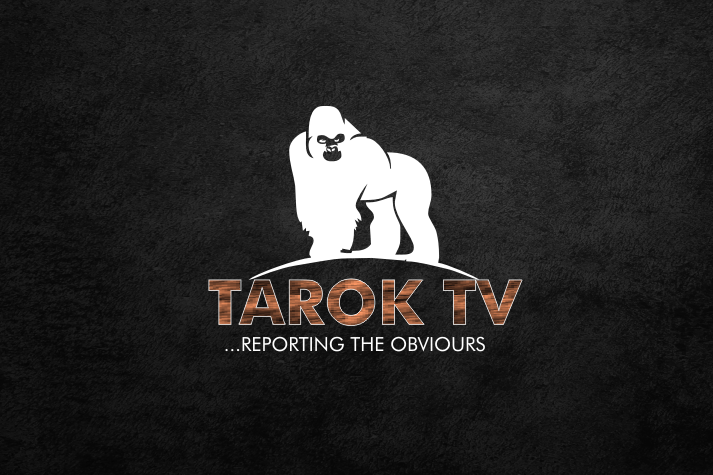Best savings account for interest rates
- Home /
- blog post
The greatest savings account for interest rates is one with a high annual percentage yield (APY), which is the yearly interest rate generated on a savings account. When comparing savings accounts, look at the APY rather than the interest rate, because the APY considers the impact of compound interest. Some internet banks and credit unions provide the greatest interest rates on savings accounts, so when comparing rates, it may be worth checking into these organizations. It is also critical to evaluate any fees or minimum balance requirements linked with the savings account, since they might have an influence on the overall interest generated.
How to compare the annual percentage yield (APY) of different savings accounts
The first step in comparing the annual percentage yield (APY) of several savings accounts is to obtain information on the APY given by each account. This information is normally available on the website of the bank or credit union, or you may contact or visit the institution to inquire about the current APY. It is critical to compare the APYs given by different institutions rather than merely the interest rate, because the APY accounts for the impacts of compound interest.
Once you have the APYs for the accounts you are considering, you can compare the potential interest generated on each account using an online calculator or a financial app. For example, if you have $10,000 to save, you may enter it into the calculator, along with the APY, for each account to see how much interest you would receive over a specified time period. This allows you to analyze the possible returns from each account and select the one with the highest interest rate for your funds.
It is also critical to evaluate any fees or minimum balance requirements linked with the savings account, since they might have an influence on the total interest received. If you simply have a limited amount to invest, a savings account with a high APY, but a monthly fee may not be the ideal option. Before making a selection, it is necessary to thoroughly analyze all characteristics of the savings account.
The role of compound interest in determining the best savings account
Compound interest is the interest generated on a savings account's principle and the interest that has accrued. This implies that the interest collected on a savings account increases up. If you put $100 into a savings account with a 10% interest rate, you will get $10 in interest at the end of the year. If you leave that $10 in the account and it continues to produce 10% interest, you will have earned an extra $1 by the end of the year. This process continues, with the account's interest accumulating.
Compound interest plays an important part in picking the best savings account since it may dramatically enhance the amount of money collected on an account. Because savings account interest is compounded, it can cause a substantially better return on investment than a savings account with a lower interest rate that does not compound. For example, if you have $10,000 to invest and select a savings account with a 10% annual interest rate, you will receive $1,000 in interest over the course of a year. If you pick a 5% interest savings account that does not compound, you will only receive $500 in interest over the same time period.
As a result, while selecting a savings account, it is critical to evaluate the interest rate as well as whether or not the interest accumulates. A savings account with a higher interest rate that compounds can provide a larger return on investment than a savings account with a lower interest rate that does not compound.
How to choose the right savings account for your financial goals
It is critical to evaluate your unique savings objectives and financial position while selecting the best savings account for your financial goals. Here are some measures you may take to select the best savings account:
- Determine your savings objectives: Why are you saving? A home down payment, an emergency fund, retirement, or something else? Knowing your goals can assist you in determining the best sort of savings account and the amount to save.
- Examine the annual percentage yield (APY) given by different savings accounts, as well as any fees or minimum balance restrictions. A higher annual percentage yield (APY) might help you earn more interest in your savings, but fees and minimum balance limitations can lower your overall return.
- Consider accessibility and ease of use: How easy is it for you to get your money? Can you simply make deposits and withdrawals? Is the bank or credit union easily accessible? When selecting a savings account, keep the following criteria in mind.
- Look for the following extras: Some savings accounts provide extras such as internet banking, mobile check deposit, and ATM access. These can help you manage your funds more easily and are handy if you have certain financial goals.
- After you've analyzed these variables, you may select the savings account that best matches your financial objectives and situation.
Before making a selection, it is critical to scrutinize different savings accounts and consider all of the elements involved. The best savings account for you will be determined by your unique financial objectives and condition.
The benefits of high-yield savings accounts
High-yield savings accounts provide a greater annual percentage yield (APY) than ordinary savings accounts. This means they generate higher interest on money placed into the account, making them a suitable alternative for people who wish to make more money on their savings. The following are some of the advantages of high-yield savings accounts:
- Higher interest rates: Because high-yield savings accounts pay a higher interest rate, you can earn more on your investments. This is especially useful if you have a substantial sum of money to save because the higher interest rate can boost the amount of income received.
- Easy access to your money: Most high-yield savings accounts allow you to withdraw your assets whenever you need them. This can be handy for emergency savings or accomplishing financial objectives, such as saving for a down payment on a property.
- FDIC insurance: most high-yield savings accounts are FDIC-insured, so your funds are guaranteed by the federal government up to a specified amount. This might provide you peace of mind and preserve your funds if your bank fails.
- Flexibility: Most high-yield savings accounts are flexible, allowing you to deposit and withdraw cash as required. This is important if your income fluctuates or you need to access your funds for unforeseen costs.
In general, high-yield savings accounts can be a good choice for individuals who want to earn more interest on their savings and have easy access to their funds.
The pros and cons of online vs. brick-and-mortar savings accounts
Online savings accounts are those provided by banks or credit unions that operate largely or entirely online. Brick-and-mortar savings accounts are provided by banks or credit unions that have actual locations where consumers may visit. Both types of savings accounts have advantages and downsides, making it difficult to select the best one for your requirements. The following are some advantages and disadvantages of online vs. traditional savings accounts:
Advantages of internet savings accounts:
- Greater interest rates: Online savings accounts frequently provide higher interest rates than traditional savings accounts, allowing you to earn more on your investments.
- Lower costs: Generally, online savings accounts have lower fees than traditional savings accounts, which can save you money.
- Convenience: Online savings accounts may be accessed from any computer or mobile device with an internet connection, making it simple to manage your savings from your computer or mobile device.
The disadvantages of online savings accounts are as follows:
- You may not have access to physical branches for in-person transactions or support since online savings accounts are offered by banks or credit unions that operate largely or completely online.
- Limited ATM access: Some online savings accounts do not provide ATM access, making it harder to withdraw funds if necessary.
- Security concerns: Because there is a potential for internet security breaches, some customers may be hesitant to trust an online bank with their funds.
Advantages of brick-and-mortar savings accounts:
- In-person support: Banks and credit unions with physical branches provide brick-and-mortar savings accounts, so you may visit a location for in-person assistance with transactions or account maintenance.
- ATM access: Most physical savings accounts have ATM access, allowing you to withdraw cash whenever you need it.
- Trust: Some people may feel more at ease putting their assets in the hands of a traditional bank or credit union with physical branches rather than an online-only entity.
Cons of brick-and-mortar savings accounts:
- Lower interest rates: Because brick-and-mortar savings accounts often have lower interest rates than internet savings accounts, you will earn less on your investment.
- Fees are often greater in brick-and-mortar savings accounts than in internet savings accounts, which can cut into the return received on your funds.
- Convenience: Because brick-and-mortar savings accounts need a physical branch visit, they may be less convenient than online savings accounts, which can be accessed from anywhere with an internet connection.
How to Avoid Fees on Savings Accounts
- Savings account fees are fees charged by banks or credit unions for certain services or activities associated with your savings account. These fees can reduce the return you earn on your investments, so try to avoid them if workable. Here are a few strategies for avoiding typical savings account fees:
- Choose a savings account with free or low fees: Many banks and credit unions offer no or low-fee savings accounts. Compare the fees imposed by several universities and select the one with the lowest or no fees at all.
- Maintain a minimum amount: Some savings accounts demand a minimum balance, and if you go below it, you may be charged a fee. To avoid this, ensure that you have enough money in your savings account to fulfill the minimum balance requirement.
- Overdraft fees are incurred when you remove more money from your savings account than is available. To prevent overdraft penalties, monitor your account balance and make sure you have enough money in it before making a withdrawal.
- Use in-network ATMs: Using out-of-network ATMs may cause penalties from some savings accounts. Use in-network ATMs or select a savings account that has free ATM access to avoid these costs.
- Read the small print: Read your savings account's terms and conditions carefully to understand any fees that may be levied. If you are unclear about a charge or have any queries, please contact the bank or credit union.
You may avoid typical savings account fees and maximize the return generated on your funds by following these guidelines.

About Admin - Admin
TarokTv, ...Reporting the obvious.
Contact
Phone number: 07062319173
Email: [email protected]
Reach out to us with any news or article.
leave a comment
1 comment
Latest Articles

Success leaves clues, and those who seek to make a difference must study the lives of those who…
read more
Langtang, a town in Plateau State, Nigeria, is not just another dot on the map but a significant origin for…
read more
Brief Biography of Gen. (Senator) Jeremiah Timbut Useni
Early Life and Education:
Jeremiah Timbut Useni, often referred to as "Jerry Boy," was born on February 16, 1943,…
read more
The Ibiari: A Sacred Tradition in Tarok land
The Ibiari Oga Sa festival, an annual tradition in Tarokland, was celebrated today as part of the year-end observance marking…
read more
ITAROK PA IZING BY REV. DR. SELBUT LONGTAU
A PAPER PRESENTATION AT ITAROK PA IZING 2ND CARNIVAL HELD AT THE AZI NYAKO YOUTH CENTRE, JOS, 30TH NOVEMBER, 2024
… read more
TarokTv News: The Return of "Gathering of Bookworms" - A Literary Revival in Langtang North/South
TarokTv is thrilled to announce the upcoming edition of the Gathering of Bookworms, a celebrated event aimed at uniting the…
read moreLatest Albums
Recent videos
Copyright © 2020 - TarokTv designed by Taroktv Media.








Hi there, I enjoy reading all of your article post. I wanted to write a little ckmment to support you. https://Lvivforum.Pp.ua/